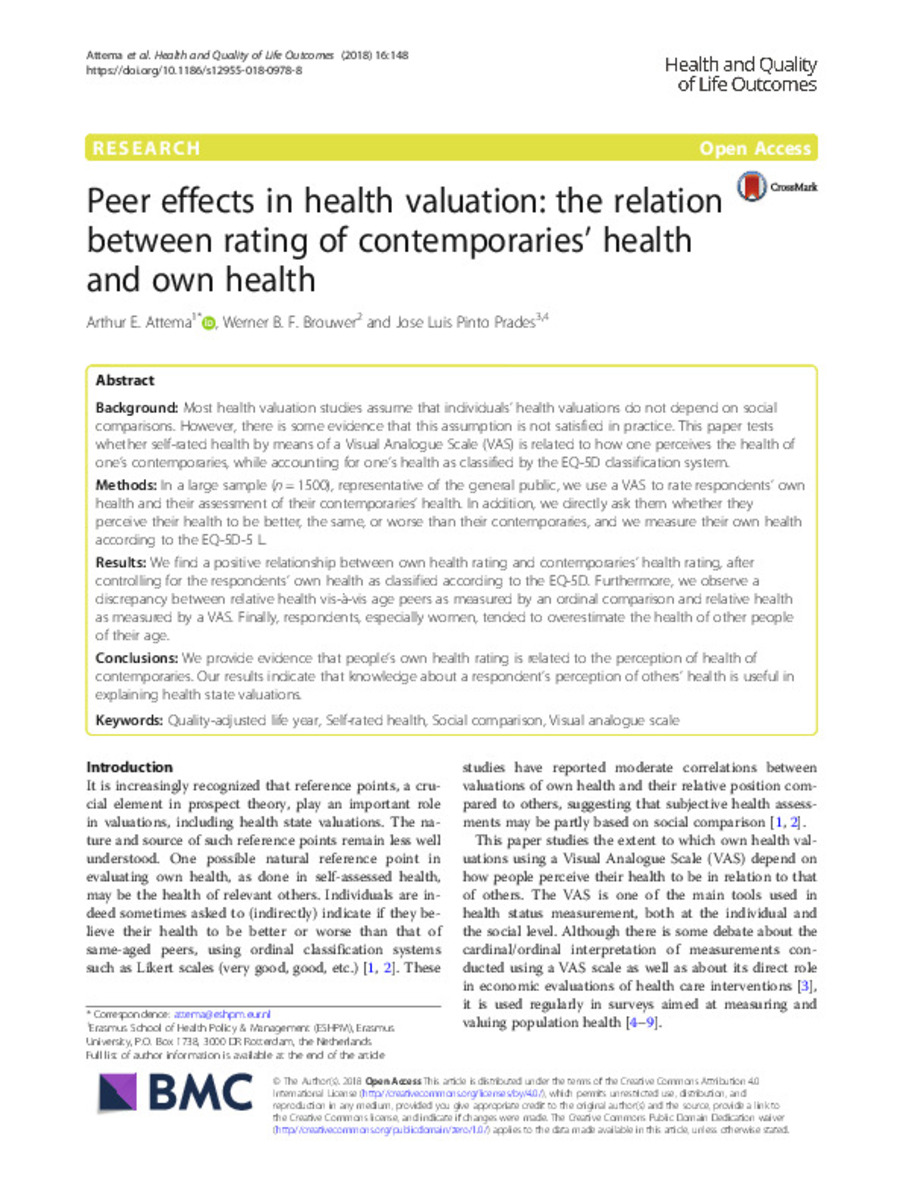Peer effects in health valuation: the relation between rating of contemporaries' health and own health
Keywords:
Quality-adjusted life year
Self-rated health
Social comparison
Visual analogue scale
Publisher:
BioMed Central
Note:
This article is distributed under the terms of the Creative Commons Attribution 4.0
International License (http://creativecommons.org/licenses/by/4.0/), which permits unrestricted use, distribution, and
reproduction in any medium, provided you give appropriate credit to the original author(s) and the source, provide a link to
the Creative Commons license, and indicate if changes were made. The Creative Commons Public Domain Dedication waiver
(http://creativecommons.org/publicdomain/zero/1.0/) applies to the data made available in this article, unless otherwise stated.
Citation:
Attema, A. (Arthur); Brouwer, W.B.F. (Werner B. F.); Pinto‑Prades, J.L. (José Luis). "Peer effects in health valuation: the relation between rating of contemporaries' health and own health". Health and quality of life outcomes. 16 (1), 2018, 148 - 156
Statistics and impact
0 citas en

0 citas en

Items in Dadun are protected by copyright, with all rights reserved, unless otherwise indicated.







